The Intel Broadwell Desktop Review: Core i7-5775C and Core i5-5675C Tested (Part 1)
by Ian Cutress on June 2, 2015 7:45 AM ESTProfessional Performance: Linux
Built around several freely available benchmarks for Linux, Linux-Bench is a project spearheaded by Patrick at ServeTheHome to streamline about a dozen of these tests in a single neat package run via a set of three commands using an Ubuntu 11.04 LiveCD. These tests include fluid dynamics used by NASA, ray-tracing, OpenSSL, molecular modeling, and a scalable data structure server for web deployments. We run Linux-Bench and have chosen to report a select few of the tests that rely on CPU and DRAM speed.
Due to our limited testing time and other issues, only the i7-5775C was processed in our Linux tests. These should be updated for Part 2.
C-Ray: link
C-Ray is a simple ray-tracing program that focuses almost exclusively on processor performance rather than DRAM access. The test in Linux-Bench renders a heavy complex scene offering a large scalable scenario.
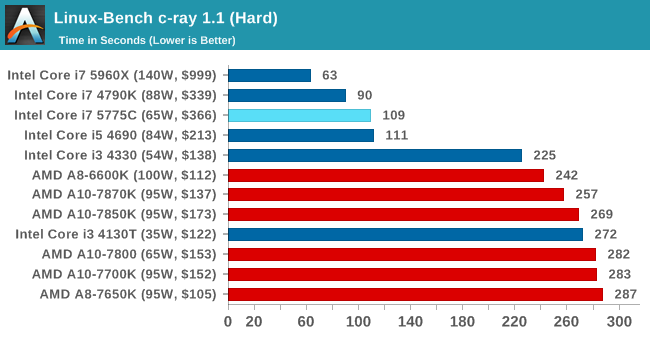
NAMD, Scalable Molecular Dynamics: link
Developed by the Theoretical and Computational Biophysics Group at the University of Illinois at Urbana-Champaign, NAMD is a set of parallel molecular dynamics codes for extreme parallelization up to and beyond 200,000 cores. The reference paper detailing NAMD has over 4000 citations, and our testing runs a small simulation where the calculation steps per unit time is the output vector.
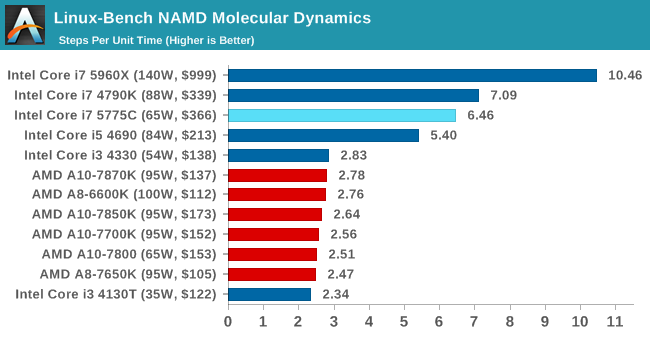
NPB, Fluid Dynamics: link
Aside from LINPACK, there are many other ways to benchmark supercomputers in terms of how effective they are for various types of mathematical processes. The NAS Parallel Benchmarks (NPB) are a set of small programs originally designed for NASA to test their supercomputers in terms of fluid dynamics simulations, useful for airflow reactions and design.
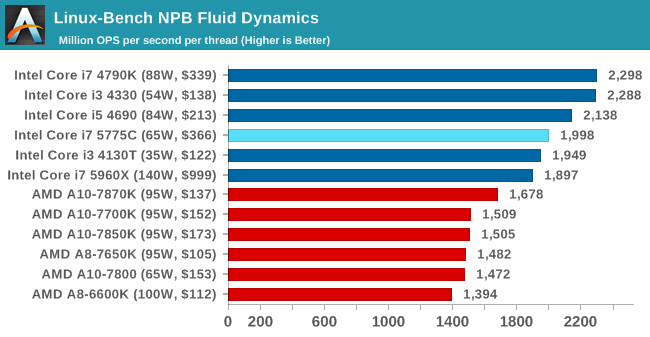
Redis: link
Many of the online applications rely on key-value caches and data structure servers to operate. Redis is an open-source, scalable web technology with a b developer base, but also relies heavily on memory bandwidth as well as CPU performance.
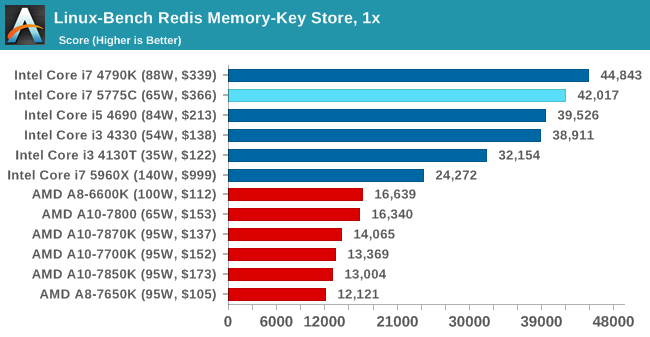
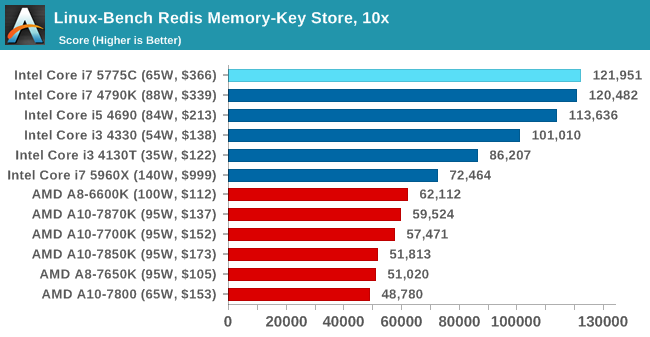
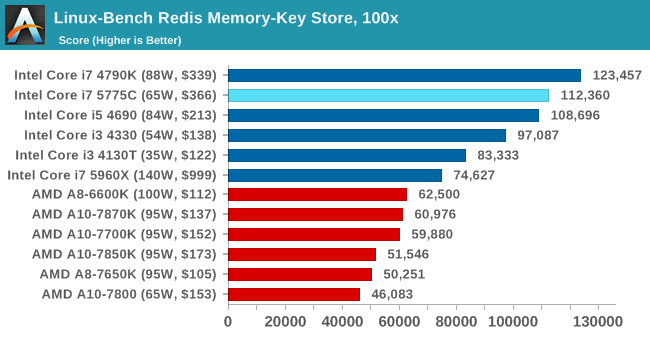










196 Comments
View All Comments
HotRod917 - Tuesday, June 2, 2015 - link
Hahaha.."lay the smackdown"..on Broadwell's candy A#$..! good one ;)Asomething - Tuesday, June 2, 2015 - link
So can you guys include 2400mhz ram in part 2 gaming benchmarks? it would be interesting to see what both sides gain from the faster ram.bobjones003@gmail.com - Tuesday, June 2, 2015 - link
Well I see no reason to upgrade yet maybe when skylake drops. My sandy bridge(i 5 2500k) will go for another generation. The cpu runs overclocked to 4.7 ghz at this I could save boat load of power on the system.Shadowmaster625 - Tuesday, June 2, 2015 - link
This review is also bunk due to the fact that they are usign a DDR3 card when even the same card with GDDR5 is way faster and only marginally more expensive. No one in their right mind even buys a gpu with DDR3 onboard.bloodypulp - Tuesday, June 2, 2015 - link
5 Years after the first AMD APU with graphics on-die, Intel finally has graphics on die.Well done Intel. *slow clap*
Peichen - Tuesday, June 2, 2015 - link
And AMD market share on CPU and GPU have been going from what to what in those 5 years? Kinda like how Bulldozer was the first "true" quad-core but managed to run at 60% of the speed of "fake quad" Q6600 and being hot as hell.bloodypulp - Tuesday, June 2, 2015 - link
Process advantage, much of it.olafgarten - Tuesday, June 2, 2015 - link
Technically Intel did graphics on-die first, they did it back in January 2010 with HD Graphics on the Clarkdale and Arrandale. It was in June 2011, when AMD released their first APU.Ryan Smith - Wednesday, June 3, 2015 - link
Clarkdale was a separate GPU die, on-package with the CPU. Intel didn't integrate the GPU on to their CPU until Sandy Bridge in January of 2011.HotRod917 - Tuesday, June 2, 2015 - link
Hey whats the whole"Thank you A for X
Thank you B for Y"...huh, whats goin on AT? Dare i say sarcasm towards manufacturer's being cry babies for not thanking them enough.
And speaking of manufacturer's...AMD its high time u pull a miracle (zen) and 'bring it, I mean the monopoly from the blue team is just ridiculous...for god sake AMD plz. Also ARM and Samsung ur welcome to join the desktop x86 party anytime..and the sooner the better.
Meanwhile i'll be rockin my delidded 3570k till skylake is out